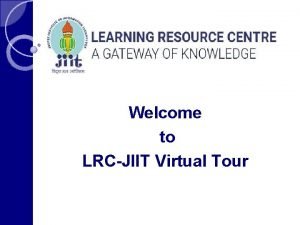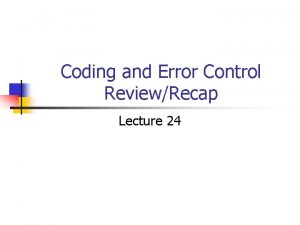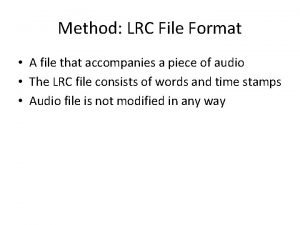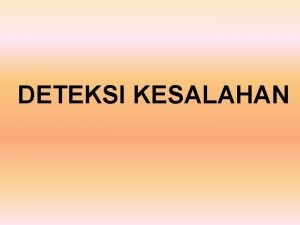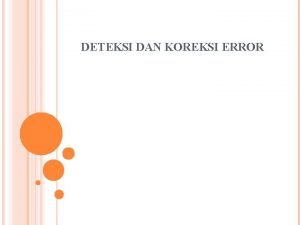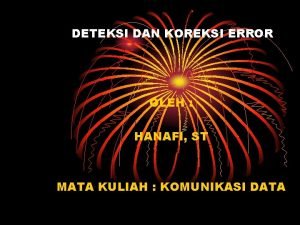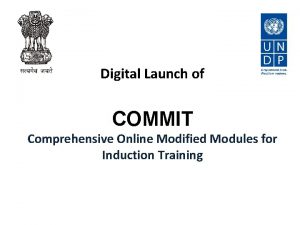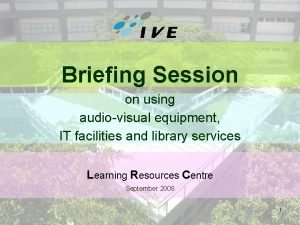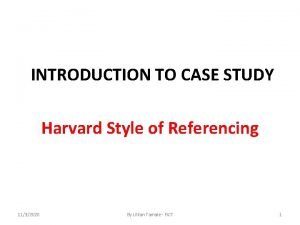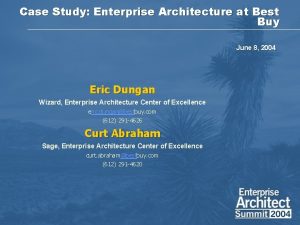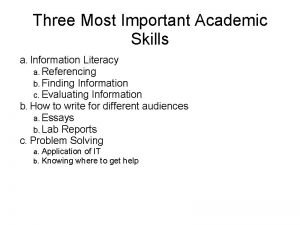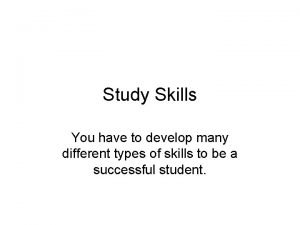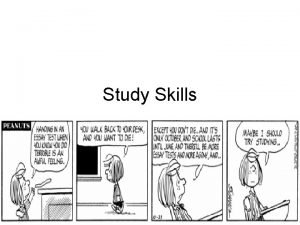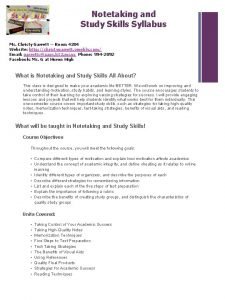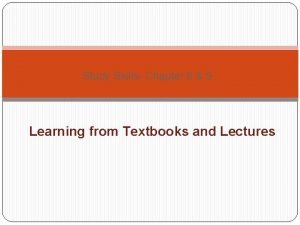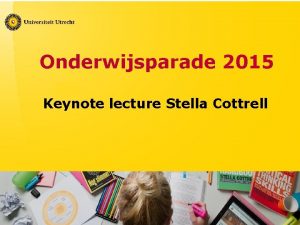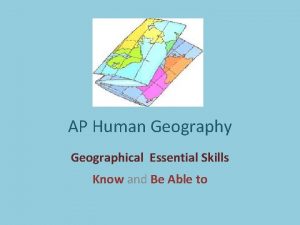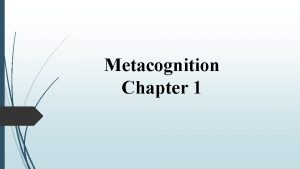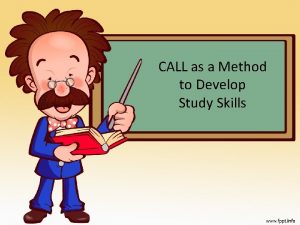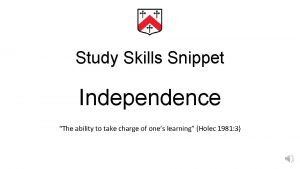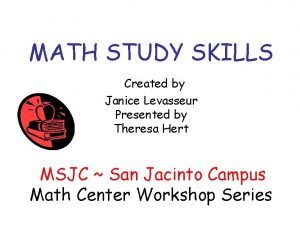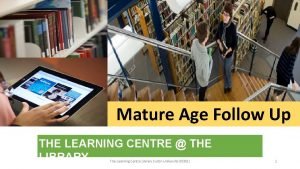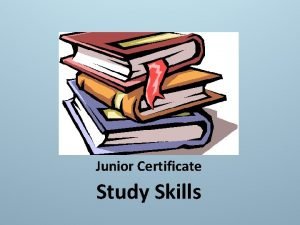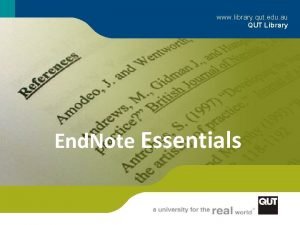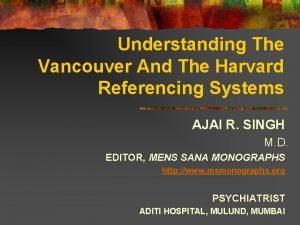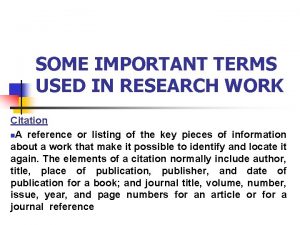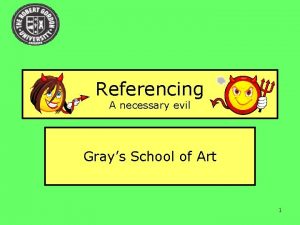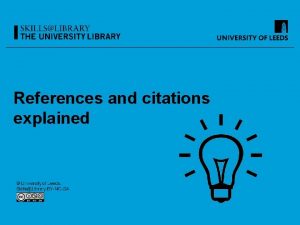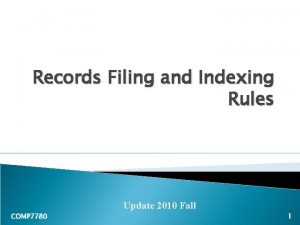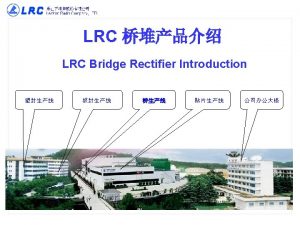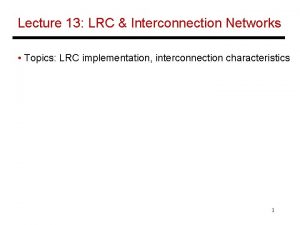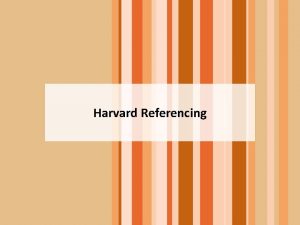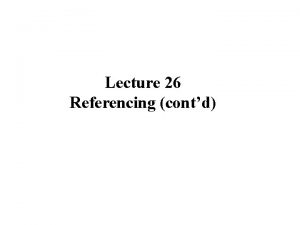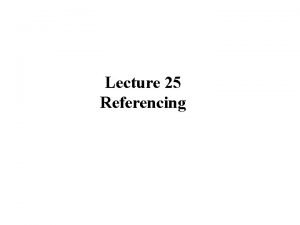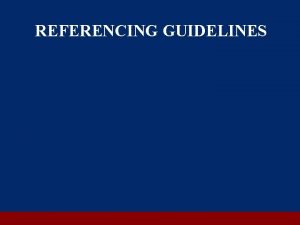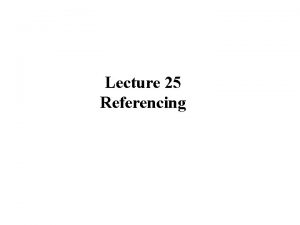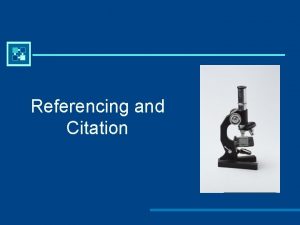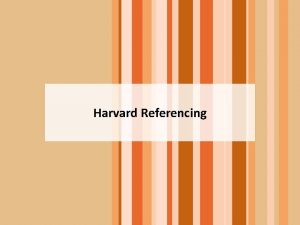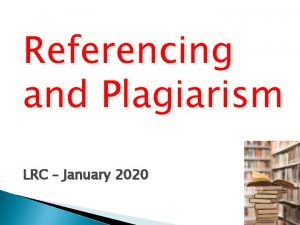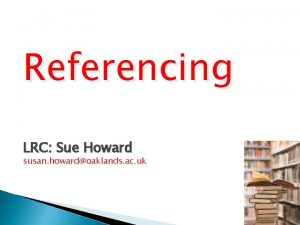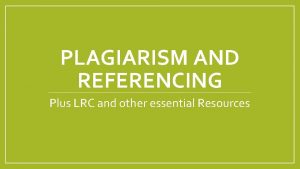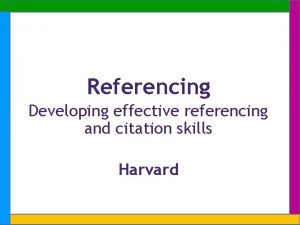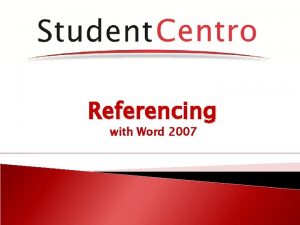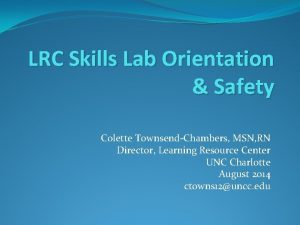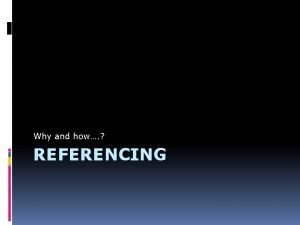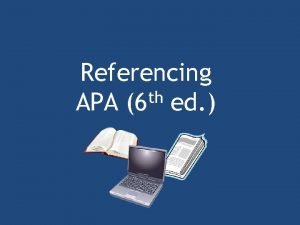Referencing LRC Study Skills Session What is Referencing
























![[Online] � Insert [Online] to a reference list only if the source you used [Online] � Insert [Online] to a reference list only if the source you used](https://slidetodoc.com/presentation_image_h2/fe7433ec6da26caaab81f99ab2af15f5/image-25.jpg)


















- Slides: 43

Referencing LRC Study Skills Session

What is Referencing? � …. .

What is Referencing? When you properly include someone else’s work in your assignments, it is called “referencing” or “citing”. Referring to another’s work is also known as a Citation. Referencing makes it clear that the words or ideas you are using originally came from another person.

Why Do I Need To Reference? … A good writer is always thinking, using ideas and facts from sources to shape and inform an argument!

Why Do I Need To Reference? As a student, you need to use the work of experts as evidence to back up the points that you make and show you are learning by doing some research. Referencing shows the sources of evidence that support your thinking. Your tutor can see what you have read and how you have used the information. Referencing gives the credit that is due to experts when you use their words or ideas. Referencing also makes it easy for readers to find the same sources that you have used, if they want to find out more. Referencing will guard you against being accused of plagiarism, which is passing others work off as being your own.

What is Plagiarism? � Committing literary theft e. g. to steal and pass off (the ideas or words of another) as one's own � Includes all mediums e. g. using (another's production such as website or You. Tube clip) without crediting the source � If you got information from any existing source – it must be REFERENCED! Plagiarism is picked up on Turnitin!

Reference every source you use! Sources you might use to support your research vary widely! If you use it… � Images � Pictures � Tables � Charts � Diagrams � Television programmes � Films/DVDs � Radio programmes � You tube clips � Emails etc!! reference it!

Plagiarism All of the following are considered plagiarism: • turning in someone else's work as your own • copying words or ideas from someone else without giving credit • failing to put a quotation in quotation marks • giving incorrect information about the source of a quotation • changing words but copying the sentence structure of a source without giving credit • copying so many words or ideas from a source that it makes up the majority of your work, whether you give credit or not

Finding LRC resources on CANVAS Learning how to reference properly is part of your course. Go to Sharepoint Under ‘Useful Links’, LRC Resource Links for Harvard Referencing and Ebooks etc. Always refer to the guide when you are writing your assignments

What information does HARVARD referencing include? �Who wrote the work? (Author) �When �What did they write it? (Date) is the name of the work? (Title) �Where can it be found? (Publisher) The style of how you insert Harvard Referencing may change in different educational contexts but the basic information needed is always the same

Where do citations and references go in an assignment? �Cover page (name, course title) �Table of Contents �Abstract/Executive �Body Summary – introduction, middle, end/conclusion - in structured paragraphs including in-text citations �Appendices �References – list in alphabetical order, surname first, then initial

Two parts of referencing � In-text citation Medwell (2007: 25) advises that “when working with teaching assistants one needs to communicate, very precisely, their role in each lesson. ” Page Numbers: either p. 25 or : 25 Lower case e for editors (eds) Upper case E for Editions (Ed/Edn) (appears after title) Brief reference � References list at the end of your assignment Medwell, J. (2007) Successful teaching placement. 2 nd Edn. Exeter: Learning Matters. References list is NOT the same thing as a Bibliography! Full details of source

Creative ways to introduce in text citations: (Authors names inside brackets) • Studies (Howard, 2018; Newey 2018) indicate that • A recent study (Howard, 2018) has challenged… (Authors name outside brackets at beginning) Howard (2018) • Found that • Calculated that • Describes the impact of • Suggests that • Demonstrated that • Showed that • Claims that • Discussed the idea that • Considers that • Points out that • Supports • Challenges • Summarises (Authors name outside brackets at end) • Identified by Howard (2018) • Attributes to Newey (2018) • Confirmed by… • Reported by • Asserted by • Argued by • Explained by (When more than two authors…) • This view is supported by Howard et al (2019)…

et al - means ‘and others’ in Latin • Use et al (generally italicised) if there are three or more authors • Mintzberg et al (2003) • ALL authors should be listed in References list: • Mintzberg, H. , Lampel, J. , Quinn, J. , and Ghoshal, S. (2003) The Strategy Process. 2 nd European Edn. Harlow: Pearson Education

How do I add a reference? …

Two steps: In the text you: CITE the work of experts in your field in two main ways: � Use a “direct quote” � But it is better to: paraphrase or summarise the ideas in your own words At the end of your assignment � Put a list of the sources you have cited at the end of your document with the title: References

Example: A Direct Quote � You can copy other people’s text if you make it clear that it is not your own. � You need to add speech marks (“__”) or indent it to make it stand out from the rest of your text. � You need to add the Author, Year and Page Number. Example of a Direct Quote: Author(s) Year Jackson and Jackson (2004: 28) Page state that “…notes must be sufficiently clear and Number detailed to be of value to someone reading them a long time after the scene was processed. ” Text Quoted

To complete the Reference list at the end you need: Author: Jackson, A. and Jackson, J. (last name, initials, no spaces between initials) Date of Publication (in brackets): (2004) Title of item (write it in italics if a book): Forensic Science Separate location and name of publisher with a colon : Place of Publication: Harlow: Name of Publisher: Pearson Education Punctuation is a variable; consistency is not! Jackson, A. & Jackson, J. (2004) Forensic Science. Harlow: Pearson Education

Where to find the publishing details in a book? • Look at the front pages of the book • You need: • Date • Location (e. g. London, New York, Harlow etc) • Name of Publisher

So when Referencing a Book: Record specific details of book that you use: Actual text: “It is, however, possible to argue for an education that is entirely theoretical and see it as a duty to combat those who would promote an education that was in any way practical. ” Author: Andy Armitage Title: Teaching and Training in Post Compulsory Education, 3 rd Edn Page: 23 Date Published: 2007 Publisher: Milton Keynes: Open University Press

Referencing soon gets tricky!

TOP TIPS!!! Consult the Hvd Ref guide!! � Insert references correctly in your work as you write it! � If you are researching and not writing yet then ALWAYS make a note of page number and text of useful ideas/quotes that you plan to use � GET IT RIGHT � � Check your referencing is accurate for the education environment you are in – Harvard is differently applied in different Universities!! CONSISTENCY IS KING – use same style throughout e. g. ed, Edn etc –and stick to it! Proofread and proofread again! (Do the weblinks still work? ) Only reference sources you actually use! FIRST TIME

Activity Using the handout provided, find the details needed to reference a direct quote from a book: � Here is the quote from page 57: ” You can quote from an original work provided you acknowledge the source of your information. ” How do you cite this properly? What reference details do you need to keep to create your References List? Find the following details: Author(s): Date: Title: Publisher:

I would go for… � Pearson, (2010), BTEC National Health and Social Care Level 3 Study Skills Guide, Harlow: Pearson Education
![Online Insert Online to a reference list only if the source you used [Online] � Insert [Online] to a reference list only if the source you used](https://slidetodoc.com/presentation_image_h2/fe7433ec6da26caaab81f99ab2af15f5/image-25.jpg)
[Online] � Insert [Online] to a reference list only if the source you used was the online version of a source that is available in both hard copy and electronic copy � E. g. for journals, newspaper articles, reports etc � Example: Morgan Stanley (2014) Morgan Stanley Reports First Quarter 2014 [Online] Available at: …. [Accessed: …. ] � IF THERE IS NO HARD COPY YOU DON’T NEED TO INSERT [ONLINE]

Research Notes: Save yourself some time… 1. 2. 3. Keep a copy of any useful text e. g. print it out, keep notes If it is from a book, you need to know: title, author, page number, date published and name of publisher (ask in the LRC for help as needed) If it is from a website, you need: the specific URL from that webpage and the author if known. Also note down the date you accessed it.

Referencing a Web Page This is the information you need to record for each website that you use: Useful text: “The Curriculum for each subject was laid down in statutory orders, with attainment targets, programmes of study and ten levels of attainment defining what a pupil must know and be able to do at each level. ” Author: Covington, P. Title: New Vocationalism Available at: NB: No date http: //www. sociology. org. uk/pcnewvoc. doc for when page rd was uploaded! Date accessed: 23 March 2010

Website when author known! (Covington, 2010) Covington, P. (2010), New Vocationalism, Available at: http: //www. sociology. org. uk/pcnewvoc. doc [Accessed: 23 rd March 2010] See section 12 in the Harvard Referencing Guide…

Keep Notes: Referencing a Journal This is the information you need to record for each journal that you use: Useful text: When technology changes, there is a tendency to use sound to create a continuation between old and new design – an example of this is the shutter sound featured on smart phones when a photo is taken; there is no shutter going off, but the sound provides a reassurance to users. Author: Eliza Williams Title of Article: Street Sounds Title of Journal : Creative Review Volume number: 6 Part number/month: (February) Page numbers: pp. 52 -67 Year of publication: 2014


How to complete a direct quote using an online journal resource: � “Trust is a fundamental aspect of the moral treatment of stakeholders within the organization– stakeholder relationship. . ” (Greenwood and Van Buren, 2010, p. 425) � Website reference does not require a page number � But does require two additional aspects: � Greenwood, M. and Van Buren III, H. , (2010), ‘Trust and Stakeholder Theory: Trustworthiness in the Organisation–Stakeholder Relationship’, Journal of Business Ethics, [Online], 95 (3) pp. 425 -438. Available at: https: //doi. org/10. 1007/s 10551 -010 -0414 -4 [Accessed on: 8 October, 2018] For journals you also need Volume and Issue number Additional details – titles of and the sequence of pages where the paper appears! chapters in books or journals appear in ‘single’ quotes; title of main work appears in italics

An Indirect Quote (or Paraphrase) � You can rewrite other people’s text and ideas in your own words if you make it clear that it is not your own. � You do NOT need to add speech marks – you can give page number if you are summarising a specific argument, but not if you are summarising an entire book or argument. � You DO need to add the Author and Year.

Example of Direct vs Indirect Quote � Jackson and Jackson (2004, p. 287) highlight that “throughout the populated world, a disturbingly high proportion of fires are deliberately started. ” � It is concerning to recognise that many fires are started deliberately (Jackson and Jackson, 2004).

Change this to an indirect quote: “Reducing exposure of the skin to the sun is most important” (NHS, 2004). NHS (2004) Basal Cell Carinoma (Rodent ulcer), London: Royal Free Hospital 4) 0 0 S (2 s that H N d e The mmen uce th heir o t rec ple red time o t f peo unt o osed o p am is ex skin sun. the NB: Website citations do not need page numbers!

Activity � Select a passage from your source and write it as an indirect quote e. g. Paraphrase (remember to rewrite the text in your own words): Author: Title: Page: Wise to keep a record of the page number in case you want to check it again later Publishing details:

Example: paraphrase from a chapter in an edited book In-text citation It is not easy for people to see the links between creativity and mathematics (Hanley, in Jones and Wyse, 2004). References Hanley, U. (2004) ‘Mathematics’. In Jones, R. and Wyse, D. (eds. ) Creativity in the primary curriculum. London: David Fulton. pp. 31 -48. Here page number appears in the full detail as these are the pages where the chapter written by Hanley appear.

A Summary �A summary is useful when you have found a large section of useful text, but there is also some irrelevant content. � You remove the irrelevant content and rewrite the rest in your own words. � You need to add the Author and Year

Example: Summary “Studies have shown that tobacco advertising increases consumption and that advertising bans can lead to a drop in consumption of between five and nine per cent. The Government estimated that the tobacco advertising ban in the UK has led to a drop in tobacco consumption of around three per cent, saving approximately 3, 000 lives in the long term. ” Action for Smoking and Health 2010 Action for Smoking and Health (2010) noted that Government analysis of studies predicted the advertising ban could prevent up to 3, 000 deaths.

Activity � Select a passage from your book or source and write it as a summary Author: Title: Page: Publishing details:

Learn more about summarising and paraphrasing Free online courses from the Open University � Paraphrasing � https: //www. open. edu/openlearn/languages /english-language/paraphrasingtext/content-section-0? intro=1 � Summarising � https: //www. open. edu/openlearn/languages /english-language/summarisingtext/content-section-0? activetab=description-tab

Quick Quiz! Created by Cardiff University: https: //xerte. cardiff. ac. uk/play_5559

Some Good News Microsoft Word will create references for you. See LRC Referencing Page for information on how: And you can create the correct reference using websites such as Neil’s. Toolbox http: //www. neilstoolbox. com/bibliography-creator/

LRC WGC Workshop: Sue Please give us feedback about your LRC workshop! <<== Simply scan the QR Code with Snap. Chat or a QR Code Reader app on your phone, or go to the link below, and complete the form. It’s quick and easy! https: //goo. gl/forms/v. HBYbj 6 x. WXPEx. Ne 32 Thanks for your feedback. New QR Code Unitag Sept 2018 Feedback for LRC Study Skills Workshop delivered by Susan Howard
 Jiit library
Jiit library Oehs lrc
Oehs lrc 110000 the lrc/vrc bit is
110000 the lrc/vrc bit is Lrc (file format)
Lrc (file format) Tentukan vrc dan lrc
Tentukan vrc dan lrc Tentukan deteksi error menggunakan metode vrc & lrc!
Tentukan deteksi error menggunakan metode vrc & lrc! Error mata
Error mata Lrc evaporative condenser
Lrc evaporative condenser Doptlrc.in/commit
Doptlrc.in/commit Vtc intranet
Vtc intranet Case study harvard format
Case study harvard format Framework best buy
Framework best buy Intrapersonal skills example
Intrapersonal skills example What are skills
What are skills Essential skills ontario
Essential skills ontario What are study skills and why are they important
What are study skills and why are they important What are study skills and why are they important
What are study skills and why are they important Developing effective study habits
Developing effective study habits Christy garrett
Christy garrett Study skills answer key chapter 4
Study skills answer key chapter 4 Apt-s study skills framework
Apt-s study skills framework Geographical data ap human geography definition
Geographical data ap human geography definition Questionnaire on study habits
Questionnaire on study habits The importance of study skills
The importance of study skills Study skills
Study skills Study skills
Study skills Study skills answer key chapter 4
Study skills answer key chapter 4 Study skills curtin
Study skills curtin Junior study skills
Junior study skills What is case series
What is case series Retrospective cohort study vs prospective cohort study
Retrospective cohort study vs prospective cohort study Work study and method study
Work study and method study Marty lobdell
Marty lobdell Phytogeographical regions of india by d chatterjee
Phytogeographical regions of india by d chatterjee Objectives of work study
Objectives of work study Distinguish between time study and motion study
Distinguish between time study and motion study Qut.edu.au library
Qut.edu.au library Citing and referencing difference
Citing and referencing difference Difference between vancouver and harvard referencing
Difference between vancouver and harvard referencing Quoting multiple authors apa
Quoting multiple authors apa How do you cite in apa a website with no author?
How do you cite in apa a website with no author? Rgu library referencing
Rgu library referencing Harvard referencing book example
Harvard referencing book example What is cross referencing in filing
What is cross referencing in filing
